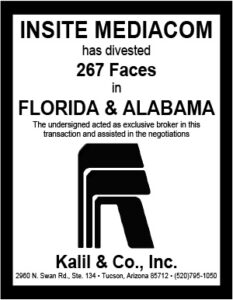
On October 27th, Amy Coney Barrett was sworn in as the third and most recent of President Trump’s nominations to the Supreme Court, joining Justices Kavanaugh and Gorsuch. The “new” Supreme Court is decidedly conservative, led by Chief Justice Roberts, Justices Alito and Thomas, and now, Kavanaugh, Gorsuch, and Barrett. The other three Justices, Sotomayor, Breyer, and Kagan, are generally considered judicially liberal.
The conservatives and liberals, however, got together and unanimously decided perhaps the Court’s most important First Amendment signage case on June 15, 2015 in Reed vs Town of Gilbert. The majority opinion, written by Justice Thomas and joined by Chief Justice Roberts, Justices Alito and Sotomayor, along with former Justices Scalia and Kennedy, held the Town of Gilbert’s regulations on Pastor Reed’s temporary signs advertising his church’s religious services were content-based restrictions on free speech that failed to survive strict scrutiny, thereby invalidating the regulations under the First Amendment. Three concurring opinions were also written, starting with one written by Justice Alito, joined by Justice Sotomayor and former Justice Kennedy, in which he agrees that “content-based laws must satisfy strict scrutiny,” but suggested that “municipalities are [not] powerless to enact and enforce reasonable sign regulations,” such as “rules distinguishing between on-premise and off-premise signs.” Another concurring opinion was authored by Justice Kagan, joined by Justice Breyer and former Justice Ginsburg, in which she lamented that “this Court may soon find itself a veritable Supreme Board of Sign Review,” and advocated that “we can administer our content-regulation doctrine with a dose of common sense,” by using a less rigid standard than the strict scrutiny test applied by the majority.
President Trump’s nominees were not on the Court and did not participate in the Reed vs Town of Gilbert opinion. However, Justices Kavanaugh and Gorsuch participated and even wrote opinions in the Court’s next major First Amendment case, Barr vs American Association of Political Consultants, decided on July 6, 2020. In another decision where all nine Justices agreed on the judgment, Justice Kavanaugh wrote the majority opinion, holding that the Telephone Consumer Protection Act, which generally prohibits all robocalls to cell phones, except those made solely to collect a debt owed to the U.S. Government, was a content-based speech regulation failing to withstand strict scrutiny, and it therefore violated the First Amendment. A few concurring opinions were also written, including one by Justice Gorsuch, who agreed the Act was an unconstitutional content-based restriction on free speech subject to strict scrutiny, but disagreed with the majority on the issue of severability.
Justice Barrett, therefore, joins a conservative Court, in which at least five of the Justices, Roberts, Thomas, Alito, Kavanaugh, and Gorsuch, have found content-based regulations on free speech subject to strict scrutiny and in violation of the First Amendment. The judicial philosophy of Justice Barrett has been described as “originalist” or “textualist,” in the mold of her mentor Justice Scalia, as she explained during her nomination ceremony in the Rose Garden: “I clerked for Justice Scalia more than 20 years ago, but the lessons I learned still resonate. His judicial philosophy is mine too: a judge must apply the law as written. Judges are not policymakers, and they must be resolute in setting aside any policy views they might hold.” Judge Barrett joined the U.S. Court of Appeals for the Seventh Circuit on November 2, 2017, and while apparently not writing any major opinions on signage, she authored or joined several First Amendment opinions while on the Seventh Circuit that generally followed her conservative approach, including Acevedo vs Cook County Officers Electoral Board ,Lett vs City of Chicago, Adams vs Board of Education of Harvey, and Smadi vs True. It is likely, therefore, that Justice Barrett will continue to apply these judicial principles, making her at least the sixth Justice on the new Court to find content-based restrictions on free speech subject to strict scrutiny and in violation of the First Amendment.
This assessment of the current make up of the Court is especially relevant in light of rash of content-based constitutional challenges to the on-premise/off-premise sign distinctions in State Highway Beautification Acts and municipal sign ordinances across the country. For example, the Texas, Tennessee, and Kentucky HBAs were struck down by lower appellate courts in Auspro vs TxDOT, Thomas vs Bright, and L.D. Management vs Transportation Cabinet. In just the last couple of months, on August 25, 2020 in Reagan and Lamar vs City of Austin, and on September 4, 2020 in International Outdoor vs City of Troy, the Fifth Circuit and the Sixth Circuit invalidated city sign codes burdened with the same content-based distinctions. In all of these cases decided by the state and federal appellate courts, the disparate regulatory treatment of on-premise vs off-premise signs was held to be content-based, subject to a rigorous strict scrutiny analysis, and in violation of the First Amendment. The new Supreme Court, especially with the addition of Justice Barrett, is likely to rule in the same manner, should such a case come before it.
[wpforms id=”9787″]
Paid Advertisement

















